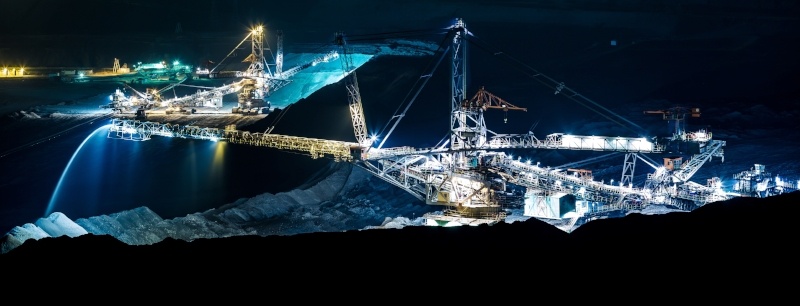US Government Opens Millions of Acres in the California Desert to Mining
In an effort to deliver on their promised declaration to “make America great again,” the Trump administration has taken initiatives that they assert...
2 min read
Tomaso Veneroso : Feb 3, 2018 12:40:19 PM

Exploration is the lifeblood of the mining industry. While difficult, labor-intensive and expensive, exploration is absolutely necessary to the advancement of the industry. Exploration is to mining what research and development are to pharmaceutical companies -- without these processes, progress would come to a halt.
Today, mine exploration has become more difficult than in years past. Most of the "easy pickings" have already been found, leaving geologists to search for the proverbial needle in the haystack. Those faced with finding viable new mineral deposits must continually persevere through frustration and failure. Historically, there have been approximately 7,000 diamond deposits found worldwide. Only 60 of these deposits have been identified as economically viable for development. Of those 60, only seven are what could be considered "top-tier" mines.
According to Charles Skinner, Head of Group Exploration at De Beers, "It's not luck finding a new mine -- it's about the methodical acquisition of facts.” Despite continuous discovery efforts, it's been quite some time since a large diamond deposit has been found, and there are no new large mines being built today.
Global consumption determines how much new material needs to be discovered and developed each year. While the consumer demand for diamonds has not yet exceeded the amount of product available, the demand for gold has exhausted a dwindling supply.
According to Mark Bristow, CEO of Randgold Resources, “The only way to create value in the mining industry is through discovery and development.” In 22 years, Randgold has unearthed a total of five large gold deposits in Africa and continues exploration activities, realizing more gold is always needed.
Bristow explains that the gold mining industry, in particular, has failed to replace what it has previously mined, leading to dwindling gold supplies worldwide. Adding to the problem, an industry downturn in 2014 had mining companies slashing their budgets, curtailing important exploration activities and furthering the chances of a future supply gap not only for gold, but also copper and iron, two heavily consumed mined metals.
Copper is a much-prized commodity because of its versatility and is used in a great variety of industrial and manufacturing applications, such as in the automotive, electronics and building construction industries.While many large mining companies have expressed an interest in the discovery and development of copper mines, this process is nowhere as easy as it used to be.
In years past, copper deposits could literally be found above ground, but those days are long gone. Mother Nature has made it difficult to locate these prized deposits, and with the easy-to-find deposits long since discovered, explorers must go further afield to find what they're looking for.
To further their production goals in the face of less successful exploration, big mining companies are implementing two strategies. One is through mergers and acquisitions. But according to experts, this is merely a way of rearranging existing assets, with nothing new being created. Plus, it's expensive to take over a mining operation that's already under development.
Another promising method for expansion is teaming up with a smaller mining company that has secured the rights to develop a particular deposit but lacks the financial resources necessary to move forward. Virtually all large miners agree that these smaller mining companies play a crucial role in the industry and must be supported in their efforts.
Brownfields exploration is relatively cost-effective and involves expanding the area of an already existing mining operation where other deposits may be found lying in close proximity and could possibly yield much more economically viable product.
Greenfields exploration, a more difficult and expensive procedure, involves going into virgin territory, but with an idea that the desired deposits exist in that area.
Narrowing down potential targets for development is a data-driven, hard-headed exercise. Tinto Rio enjoys a successful target rate of about one in 150 in an industry that averages around one in 1,000.

In an effort to deliver on their promised declaration to “make America great again,” the Trump administration has taken initiatives that they assert...

Until recently, cobalt has been somewhat of a sleeper on the commodities market. It was much less in the news than other metals such as gold, silver,...

It may come as no surprise to you that Canada is currently the leading global financial hub for the mining industry. Canada consists of a huge amount...